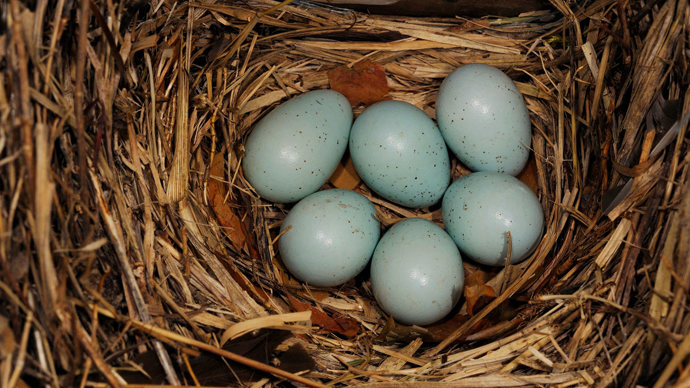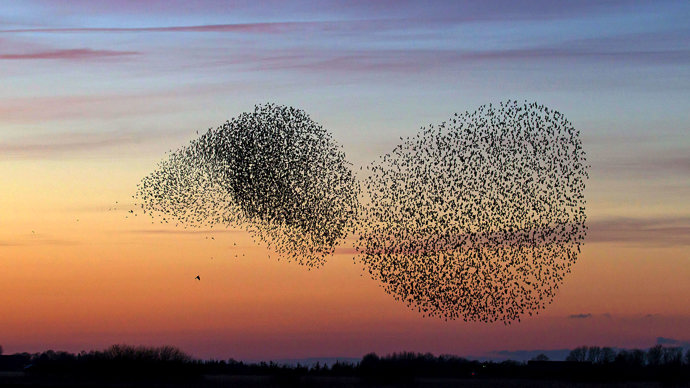Common name: starling
Scientific name: Sturnus vulgaris
Family: Sturnidae (starlings)
Habitat: parks and gardens, farmland
Diet: fruit, insects
Predators: birds of prey, domestic cats
Origin: native
Social songsters with shiny feathers and common garden visitors. These gregarious birds are probably most famed for their stunning murmuration displays.
Common name: starling
Scientific name: Sturnus vulgaris
Family: Sturnidae (starlings)
Habitat: parks and gardens, farmland
Diet: fruit, insects
Predators: birds of prey, domestic cats
Origin: native
Starlings have glossy black feathers with iridescent markings that shine blue and green in the sunlight. During the cooler months they are also covered in small white spots. They are a similar size to thrushes and weigh just under 80g. Juvenile starlings are greyish brown in colour.
Their diet is made up of invertebrates, including spiders, moths, leatherjackets and earthworms, as well as fruit. They often feed on lawns and pastures, probing the ground with their pointed beaks. They are also regular visitors to garden bird feeders.

Credit: WILDLIFE GMBH / Alamy Stock Photo
The breeding season usually takes place from March to April. Males build nests from leaves and dry grass in tree cavities, nest boxes and beneath roof tiles. They perch near the nest and sing in order to attract a mate, which will then complete the nest, adding feathers and moss. Usually 4-5 eggs are laid in mid-April, hatching around two weeks later.
The majority of starlings in the UK are resident birds, however some are migratory. They travel from northern Europe to spend the winter here, arriving during September and October. They will return home during February and March.
Starlings can often be found in gardens, parks and farmland. The species is widespread and abundant across the UK, except for the Highlands of Scotland.
Famous composer Mozart had a pet starling which could sing part of his Piano Concerto in G Major.

Credit: Juniors Bildarchiv GMBH / Alamy Stock Photo
Place a bird feeder in your garden over the winter and you are sure to attract a starling or three. Starlings are one of the most common garden birds and are very sociable, so you’re highly likely to see a group of them looking for food together.
It’s not uncommon to see a murmuration of starlings flocking together as they fly to their communal roosting sites. Look for these incredible displays in autumn at dusk, particularly over reedbeds.
Despite being common throughout the UK, the starling population has declined dramatically since the 1980s. They are therefore a Red List bird of high conservation concern.
Keep exploring